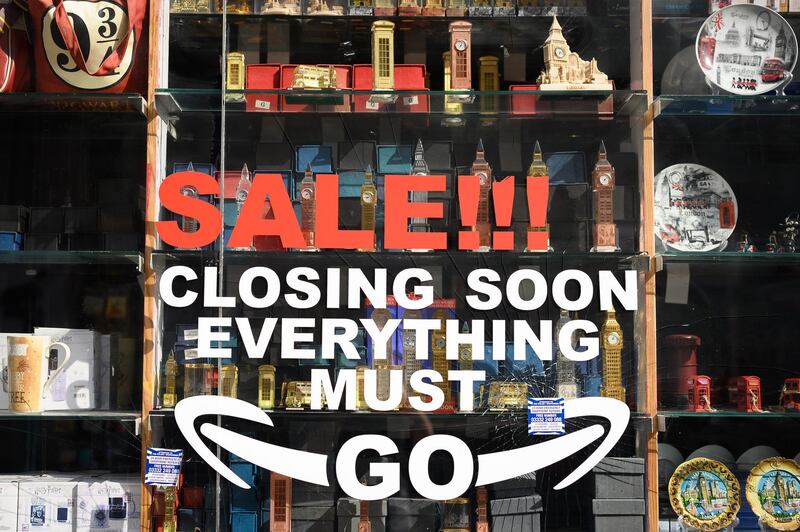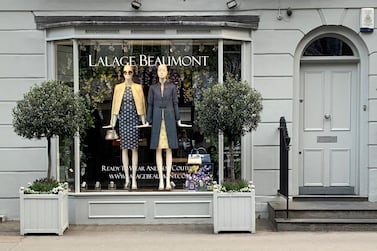Britain’s footfall was 27.7 per cent lower in May compared with the same month in 2019 despite the economy reopening further from the latest round of Covid-19 restrictions.
While UK football increased by 12.3 per cent in May from the previous month, it was still significantly down on pre-pandemic levels seen two years ago, according to the British Retail Consortium, but there is hope ahead after the services sector recorded the biggest jump in activity in 24 years in May.
Helen Dickinson, chief executive of the British Retail Consortium, said many high streets have an increasing number of vacant shops, as retailers still face significant and mounting debts, with £2.9 billion ($4.10bn) in unpaid rents built up over the pandemic.
“The government should ring-fence these lockdown rent debts to provide the breathing space for footfall and cash flows to recover, and enable landlords and tenants to work on equitable and long-term solutions for the future and avert terminal decline in many communities,” said Ms Dickinson.
The drop in footfall in May was felt most in shopping centres, which saw a decrease of 41.3 per cent from May 2019, while footfall on high streets and in retail parks fell 34.6 per cent and 19.9 per cent, respectively, over the same period.
Britain's retailers were hit hard by the pandemic with shops particularly affected by closures during three lockdowns in England. The latest shutdown saw non-essential shops in England close from early January until April 12.
The reopening caused retail sales to soar 9.2 per cent in April from a year earlier as consumers splurged on new clothes, according to the Office for National Statistics.
The April surge, which followed a 5.1 per cent rise in March, means sales volumes were 42.4 per cent higher than in the same month last year when the UK was plunged into its first nationwide lockdown.
However, the outlook looks rosier after Britain's services sector recorded the biggest jump in activity in 24 years in May when restaurants and cafes were allowed to resume serving customers indoors, according to the IHS Markit/CIPS Purchasing Managers' Index.
The PMI rose to 62.9 in May from 61.0 in April, taking it to its highest since May 1997 and above an initial estimate of 61.8, adding to signs that Britain is enjoying a very rapid initial rebound as the lockdown rules relax.
"The latest survey results set the scene for an eye-popping rate of UK GDP [gross domestic product] growth in the second quarter of 2021, led by the reopening of customer-facing parts of the economy after winter lockdowns," said Tim Moore, IHS Markit's economics director.
Earlier this week the Organisation for Economic Cooperation and Development said Britain would see the fastest growth of any major economy this year.
“The unpaid rents accrued during the pandemic, when most shops were shut, are a £2.9 billion ball and chain for retailers."
— The British Retail Consortium (@the_brc) May 31, 2021
BRC's Helen Dickinson on the ending moratorium on rent collection. Govt must support, not squander, retailer recovery.
Read 👇 https://t.co/ic6QwjLB3A
The easing restrictions helped to increase footfall in May compared with the previous month, said Ms Dickinson, with the reopening of indoor hospitality enticing consumers back to shopping locations knowing they could grab a drink or something to eat while enjoying a spot of retail therapy.
“The successful vaccination roll-out has also boosted consumer confidence and contributed to the improvement in footfall,” Ms Dickinson said.
“However, restrictions on travel have denied many businesses, particularly those in our larger town and city centres, of vital overseas tourist spending.”
Last week The National reported that luxury retailers in wealthy London neighbourhoods such as Knightsbridge were struggling without the normal influx of high-spending Gulf tourists.
Andy Sumpter, retail consultant EMEA for Sensormatic Solutions, said while footfall showed a slow but steady recovery in May as shoppers continued to return to bricks-and-mortar stores, the outlook was still uncertain.
“The prospect of a sustained recovery is still very much hanging in the balance, with variants of concern and an uptick in infection rates threatening to undermine consumer confidence, and the final stage of unlocking is far from a fait accompli,” said Mr Sumpter.








